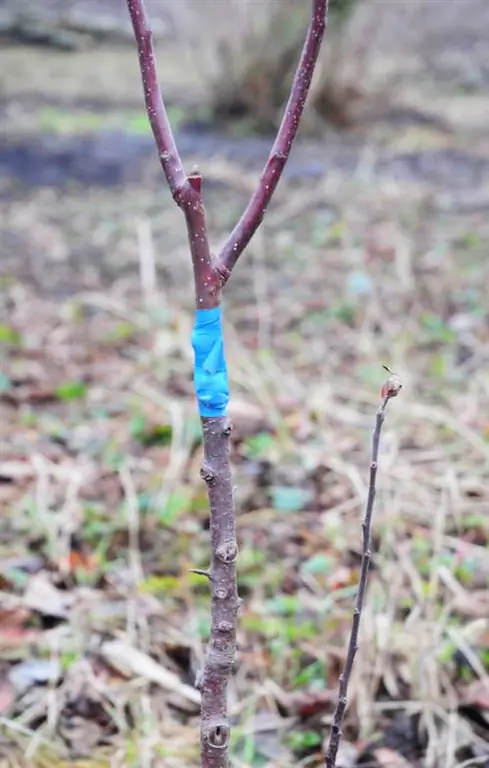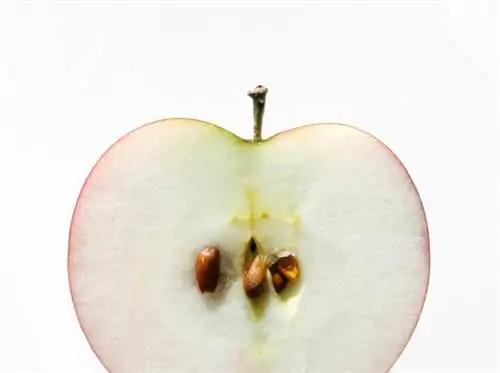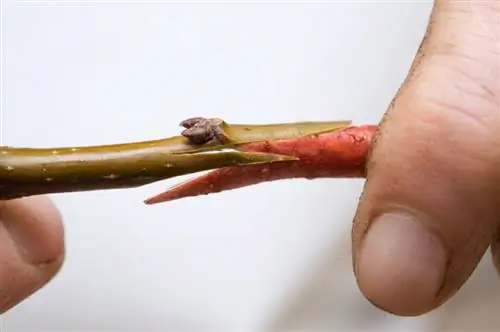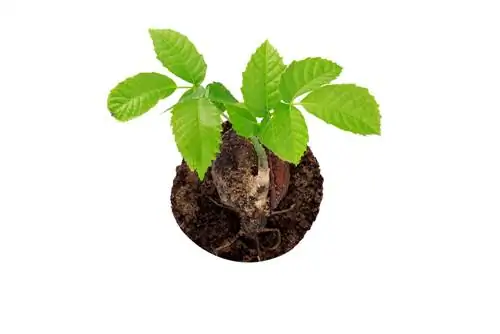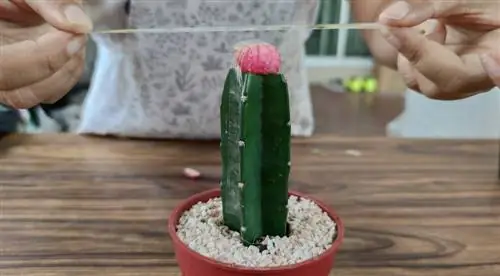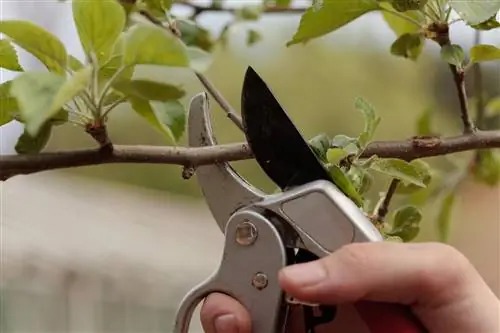- Author admin [email protected].
- Public 2023-12-16 16:46.
- Last modified 2025-01-23 11:19.
For many hobby gardeners, growing a young apple seedling from a core is an extremely exciting experiment. If it has been well looked after for a few years, it can be refined with a tried and tested apple variety.
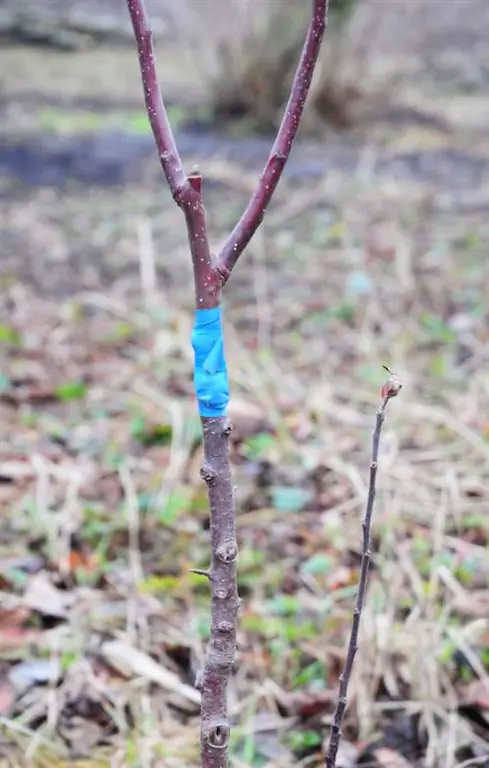
How can I graft an apple tree?
When grafting an apple tree, scions of a desired variety are connected to a suitable rootstock. Cut the scions while the sap is dormant, store them in a cool, moist place and graft them under optimal conditions. Fix the connection with binding tape and wound wax.
A suitable rootstock for grafting
In professional horticulture, special rootstocks are usually used to graft apple trees. Growth bases such as M9 or M11 offer precisely calculable root and trunk growth and thus a stable and vital substructure for a he althy tree crown. You can purchase such documents from specialist fruit shops for your experiments in your own garden. In most cases, home-grown seedlings also produce satisfactory results. What is important for the five-year-old seedlings is that they have a straight trunk with he althy leading branches.
The actual process of plugging
You should cut the scions of the desired grafting variety between the beginning of December and the end of January, when the tree is at its most dormant. These are kept cool and moist until around March or April, when climatic conditions are optimal for grafting. For storage, you can, for example, stick the scions in damp sand or - if available - store them in a rock cellar. The scions must neither dry out nor get too wet.
You should have the following things ready for grafting:
- the planned master base
- several well-stored scions with a length of at least 10 centimeters
- a sharp and clean knife (€15.00 on Amazon) and a pair of planting scissors
- a few pieces of raffia
- Wound wax for wound sealing
To connect the scion with the cambrian layer of the tree, the planned branch and the scion are cut at an opposite angle. Then both are pressed together and fixed with binding tape and wound wax. Depending on the weather, you should make sure that no rainwater gets between the two halves.
Important advice for grafting
While five or six leading branches on a tree can be grafted at the same time, the central trunk should not be cut off. During the first phase, this serves as a valve into which the tree can drain excess energy. This is the only way to give the scions enough time to connect with the tree's sap system. In addition, the so-called sap balance should be maintained by grafting all branches at approximately the same height.
Tips & Tricks
The exact grafting technique is not always easy to understand for beginners. Since even professionals cannot guarantee a 100% success rate, several apple trees should be grafted at the same time for motivational reasons.

